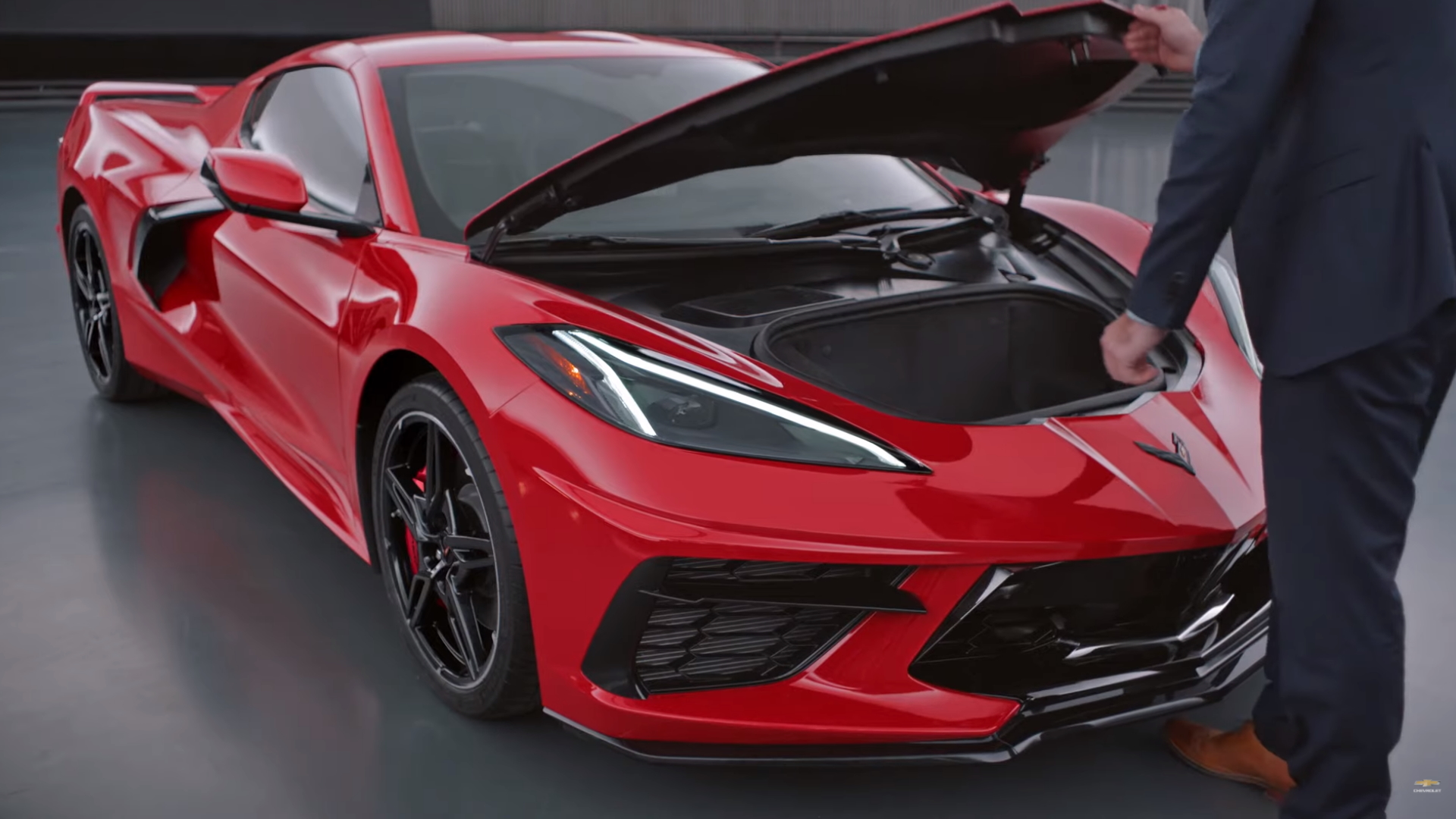

The new 2020 Corvette’s hood—which is actually a front trunk on the now mid-engined C8—apparently likes to fly open when the vehicle is driving along. That’s a bit of an issue if you like to see where you’re going, and it’s also an issue for General Motors, which has to fix the defect. But in a statement we received Monday, a Chevrolet spokesperson claims the hood-opening issue is the users’ fault, not the automaker’s.
For some quick background on the situation, a pair of complaints were filed to the National Highway Traffic Safety Administration by C8 Corvette owners last week. Both said they were driving at low speeds—one under 30 mph—when their frunk lid flew open, damaging the vehicle and causing a safety issue. In reality, there have been more than a few Corvette owners aside from these two who have talked about the same issue on social media.
My colleague Jesus Garcia gave a good breakdown of the Corvette’s hood latch mechanism in his story this past weekend:
GM engineers designed the frunk lid to have three separate positions: fully open, fully closed with a mechanical latch and partially open but still secured with a secondary latch (this is to accommodate a battery charging cable during storage, and fully closed with a second latch. Built-in safeties are supposed to ensure that it will not open if drivers accidentally press the release buttons on the key fob or in the cabin while the C8 is in gear. However, doing so when it’s in Park will open both latches to allow the lid to be easily lifted by hand, leading some owners to speculate that electronic interference could be a culprit.
There’s a secondary latch that’s meant to catch the hood when traveling over 3 mph, though this doesn’t seem to be happening with the cars in question that allegedly didn’t show the frunk was open at all.
Now here’s the statement sent by GM, emphasis ours:
After isolated reports of 2020 Chevrolet Corvette hoods being inadvertently left open while being driven, the engineering team is investigating the potential issue and will be working to prevent them moving forward. We have not been able to identify any mechanical issues related to this situation.
We’re looking at ways we can improve warnings of the hood being open by increasing the volume of warning chimes and changing the messaging that appears in the DIC. Vehicles already in the field would receive these changes through over-the-air updates.
I’m a bit miffed by the blame game, personally. A long time ago (about four months, actually) I was an Industrial Design student. I was all set to explore how people used things, design all kinds of excellent products, it was gonna be great. However, due to a set of circumstances that are difficult to keep track of, I’m here now.
That doesn’t mean I’ve forgotten everything from my extremely valuable college education, however. The user-blaming Chevrolet is partaking in is a classic no-no when it comes to creating a product. I’ve done projects specifically created to teach the designer to not blame the user for something that is completely the designer/engineer’s fault. Who else’s fault could it be? Clearly something about the C8’s frunk lid indicates it’s closed when it isn’t. That’s the designer’s fault.
Once, I totally fell into this trap when designing a generator. I know—really interesting stuff. My generator looked great, had all of this cool functionality, the renders were tight as a drum, and then it was critiqued by my classmates. And what do you know, it looked like a big insect to them! Furthermore, plugging something into the generator made people feel like they were plugging it into the bug’s eyes. It’s tough to get over that sort of thing when you spend a ton of this time designing a special product that you love so much, but in the end, it’s your fault and your responsibility to fix these issues.
Designing a bug-looking generator is not quite the same as designing the first commercially available mid-engine Corvette, but the principle is the same. The user is not to blame, the problem must be fixed by a change in the product. Probably a hardware change. These over-the-air updates seem like pretty weak stop-gap stuff to me.
If you’re designing a car, especially a halo car like the Corvette, you should take responsibility when you make a mistake—not blame the person who just gave you at least $60,000 to have it in their driveway.
Got a tip? Send us a note: tips@thedrive.com